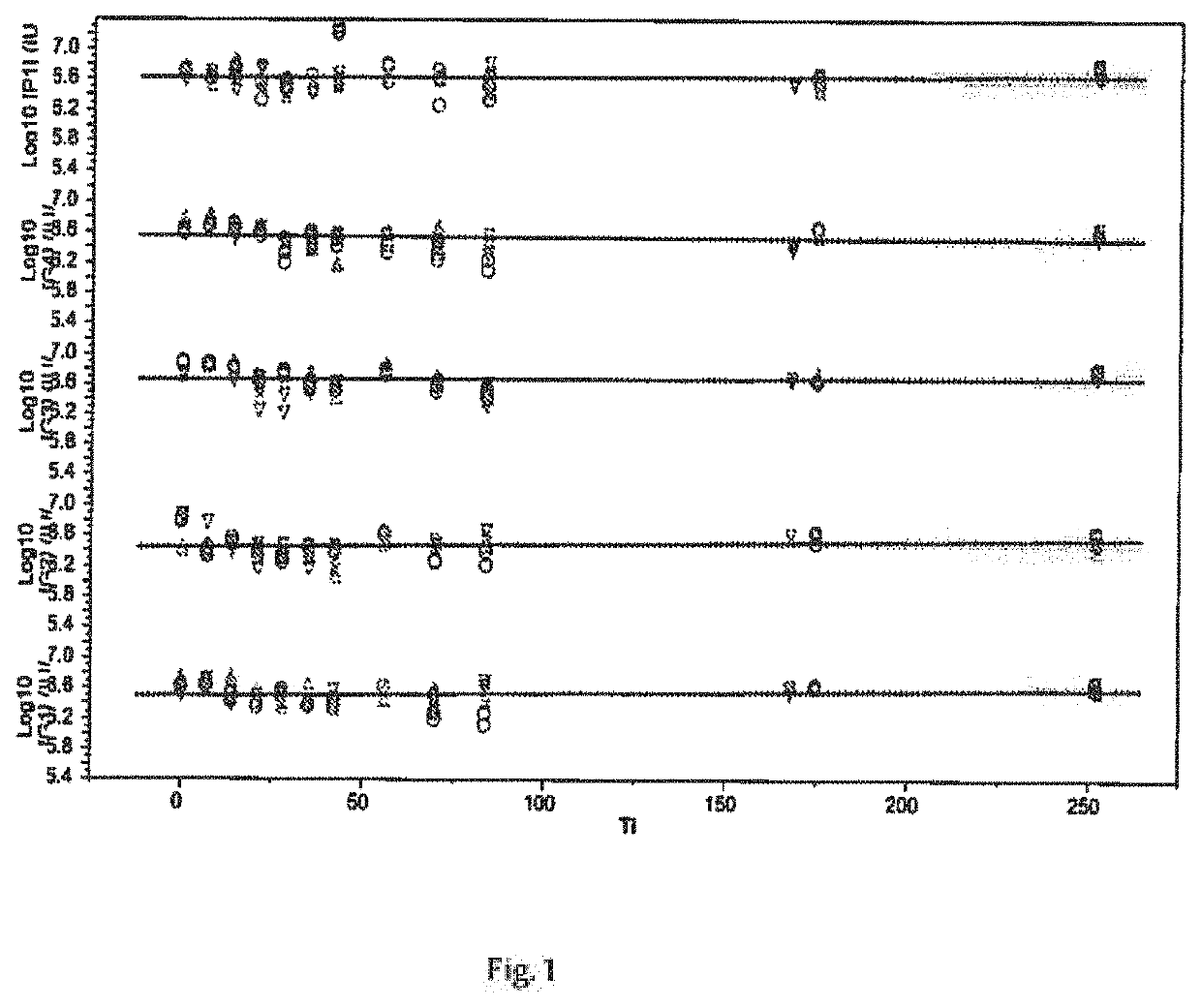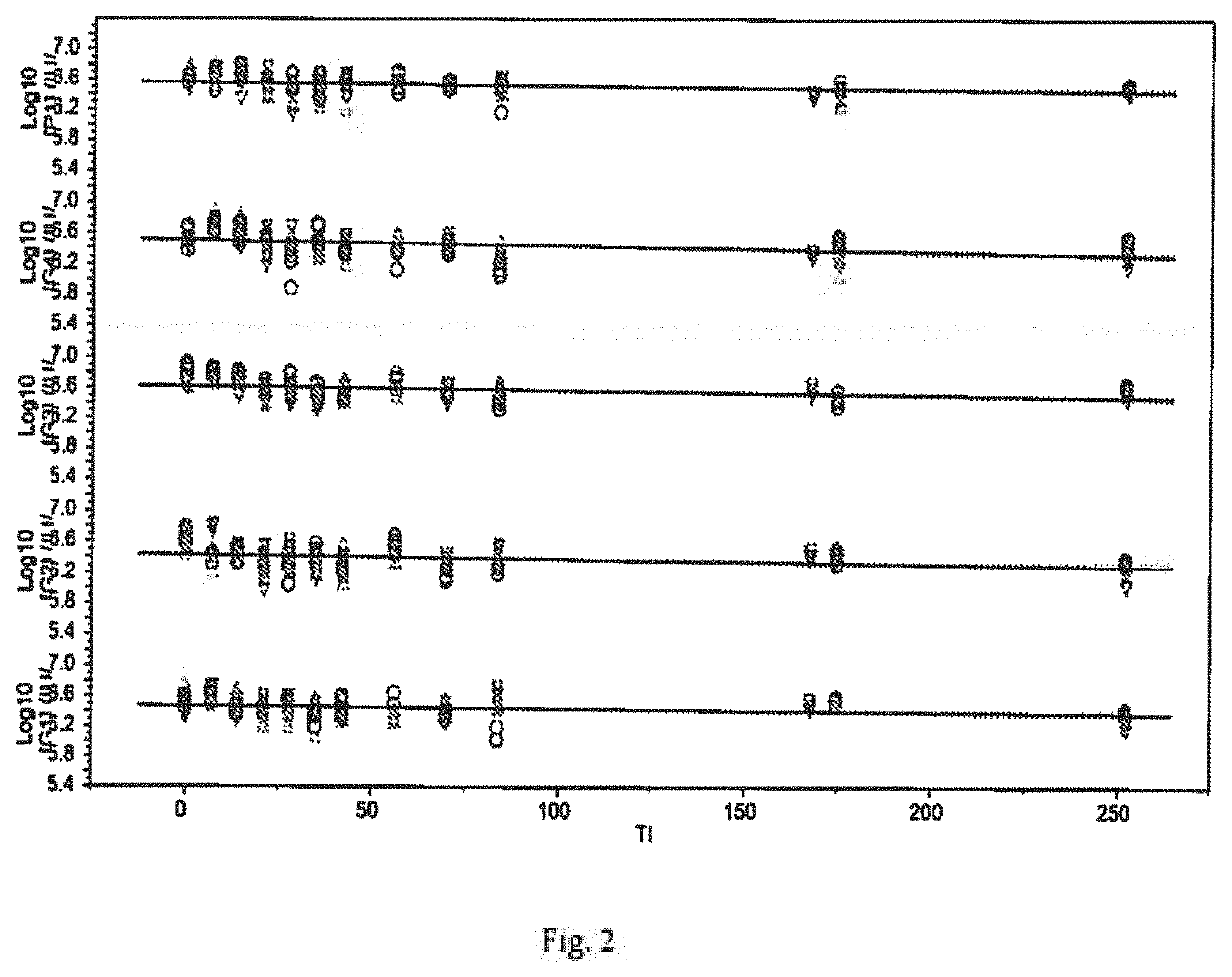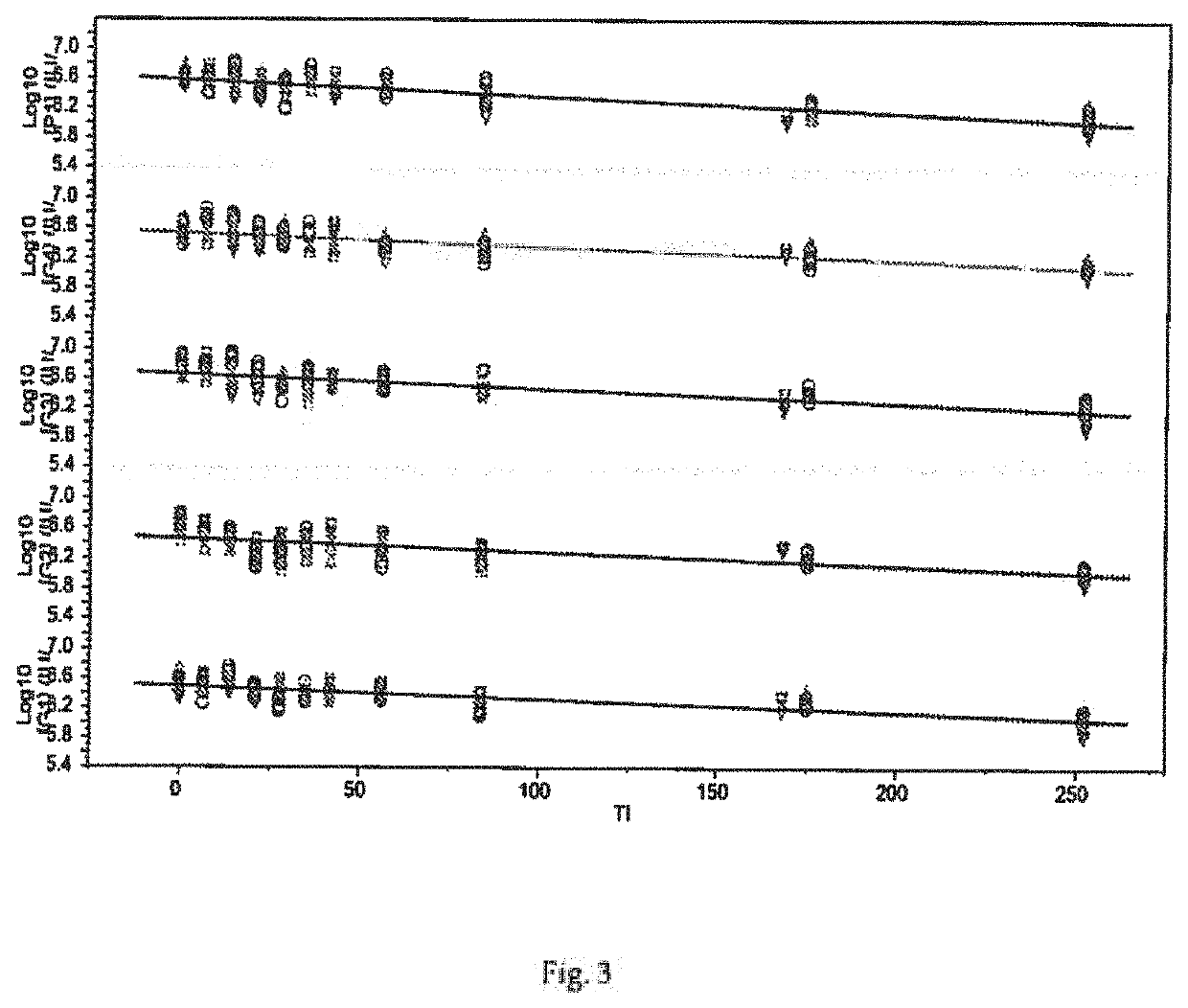Thermostable freeze dried rotavirus vaccine formulation and process to prepare thereof
a technology of rotavirus vaccine and freeze dried rotavirus, which is applied in the direction of viral antigen ingredients, biochemistry apparatus and processes, pharmaceutical non-active ingredients, etc., can solve the problems of large amount of vaccine waste, limited access to treatment, and low efficacy of rotavirus vaccine, so as to reduce production costs, reduce the effect of cold chain dependence of vaccines and preserving potency
- Summary
- Abstract
- Description
- Claims
- Application Information
AI Technical Summary
Benefits of technology
Problems solved by technology
Method used
Image
Examples
example 1
Thermostabilization of Rotavirus Serotypes using Freeze Drying Process
Study 1: Selection of Excipients Including Stabilizers:
[0075]To identify among the potential ingredients, their concentrations and combinations thereof that are likely to have a significant impact on the stability of rotavirus during freeze-drying process including further processing steps (process loss) and storage (stability loss) as well as to support optimal and economical freeze-drying process, the methodology of Design-of-Experiment (DoE) is applied. The G1 strain of rotavirus is used as representative strain to report on the virus potency changes. To minimize number of experiments, successive fractional factorial designs are used.
[0076]The fractional factorial designs are limited to the 8 factors as shown in the Table 1 and Table 2.
[0077]
TABLE 1Various stabilizers and their concentrations used to design DoE formulationsSugar / BulkingBufferNaClAgentAmino-acidsActivating agentsDispersantFactor12345678Excipient...
example 2
Designing Scalable and Reproducible Freeze Drying Process for Thermostabilization of Rotavirus Vaccine
Study 1: Optimization of Formulation
[0128]This formulation 1004 exhibited suboptimal cake properties at pilot scales with higher titres (>2000 doses) and is further optimized by varying bulking agent concentrations and the sugar: bulking agent ratios so as to increase the solid contents of the formulation generating three variants of 1004 as shown in Table 11. These modified formulations supported a freeze drying cycle of 54 h duration involving following steps;[0129]i. precooling a pre freeze-drying liquid to 10° C. to 12° C. and loading into the freeze dryer[0130]ii. Freezing the pre freeze-drying liquid at −35° C. (temperature ramp of 4° C. to −35° C.: 2 h) for 1 h and at −45° C. for 1.5 h (temperature ramp of −35° C. to −45° C.: 0.5 h) followed by annealing at −20° C. for another 2 h (temperature ramp of −45° C. to −20° C.: 1 h). Final freezing at −40° C. for 1.5 h (temperature ...
PUM
| Property | Measurement | Unit |
|---|---|---|
| temperatures | aaaaa | aaaaa |
| temperature | aaaaa | aaaaa |
| temperature | aaaaa | aaaaa |
Abstract
Description
Claims
Application Information
 Login to View More
Login to View More - R&D
- Intellectual Property
- Life Sciences
- Materials
- Tech Scout
- Unparalleled Data Quality
- Higher Quality Content
- 60% Fewer Hallucinations
Browse by: Latest US Patents, China's latest patents, Technical Efficacy Thesaurus, Application Domain, Technology Topic, Popular Technical Reports.
© 2025 PatSnap. All rights reserved.Legal|Privacy policy|Modern Slavery Act Transparency Statement|Sitemap|About US| Contact US: help@patsnap.com



